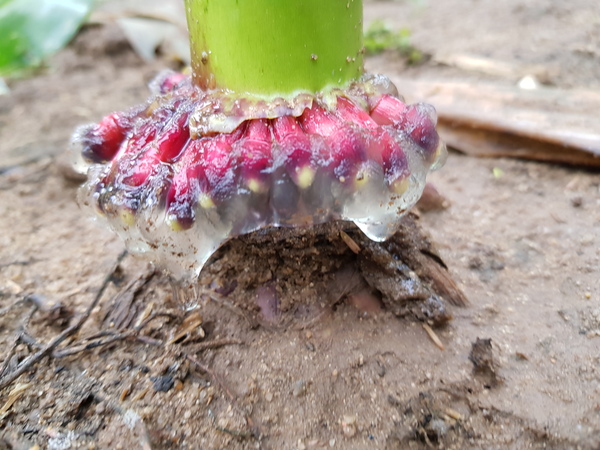More crop per drop: Harnessing rhizosphere traits for food production under multiple resource limitation
2 Geo-Biosphere Interactins, University of Tuebingen
3 Biogeochemistry of Agroecosystems, University of Goettingen
4 Root-Soil Interactions, Technical University of Munich
Keynote 4 in Perspectives on agriculture
11.10.2024, 11:15-11:40, H 36
The mobilization and uptake of immobile nutrients are reduced under water stress. Besides roots, plant-microorganism interactions in the rhizosphere, especially arbuscular mycorrhiza fungi (AMF) contribute to an unknown extent to nutrient uptake. Tropical soils are often low in soil organic matter, have low mineral P stocks and high rainfall-induced N losses. This requires crop roots to efficiently scavenge for nutrients below- but maybe even aboveground.
We developed a novel experimental setup that allows the quantification of various belowground traits to contribute to N and P uptake, which we tested with the staple food crop Sorghum bicolor. We focused, besides others, on the quantification of the contribution of AMF to plant N and P uptake from an extremely nutrient depleted Kenyan Acrisol by applying 15N- and 33P-labelled nutrient sources and unraveled the central role of AMF scavenging, uptake and transport for plant P and N nutrition under drought.
Closing nutrient cycles by AMF is challenging for N exposed to high losses in the tropics. This suggests that crops in N-depleted tropical soils developed additional traits replenishing such losses. We thus assessed the potential of sorghum and maize, both rich in mucilage secretion, to fix atmospheric N via their mucilage microbiome and develop new approaches to screen for this yet unexplored potential Poaceae plants.
These studies revealed the necessity of investigating multiple resource limitations combined with the genetic diversity of target crops. We revealed that distinct Sorghum genotypes could activate their AMF partners under drought, while similarly, the potential to harness N-fixing microbiomes in the aerial root mucilage for maize N nutrition is strongly genotype-dependent. The genetic potential to exploit root-soil-microbiome interaction for N and P nutrition is far from fully exploited and "learning from nature's solution under limiting conditions" still bears great potential for crop improvement.
Keywords: rhizosphere root-soil-microbiome interaction mycorrhization biological nitrogen fixation
Export as iCal:



